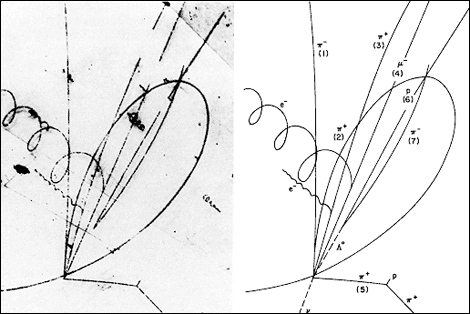Bubble chamber
|
|
Bubble-chamber.png
A bubble chamber is a vessel filled with a superheated transparent liquid used to detect electrically charged particles moving through it. The charged particle deposits sufficient energy in the liquid that it begins to boil along its path, forming a string of bubbles. Bubble chambers are similar to cloud chambers in application and basic principle. It was invented in 1952 by Donald A. Glaser, for which he was awarded the 1960 Nobel Prize in Physics.
A bubble chamber is normally made by filling a large cylinder with a liquid just below its boiling point; at the top of the chamber a camera looks in. The whole chamber is subject to a constant magnetic field. As the particles enter the chamber, a piston suddenly decreases the pressure in the chamber. This brings the liquid to a superheated state, in which a tiny effect, such as the passing of a charged particle near an atom, is sufficient to nucleate a bubble of vaporized liquid. At this moment, the camera records the picture. The magnetic field causes charged particles to travel in helical paths whose radius is determined by the ratio of charge to mass of the particle. In this way charged particles can be observed and their mass measured. However, there is no way to effectively measure their velocity (kinetic energy).
Bubble chambers have largely been replaced by wire chambers, which allow particle energies to be measured at the same time. Another alternative technique is the spark chamber.

Liquid_hydrogen_bubblechamber.jpg
de:Blasenkammer hu:Buborékkamra ja:泡箱 nl:Bellenvat ru:Пузырьковая камера
